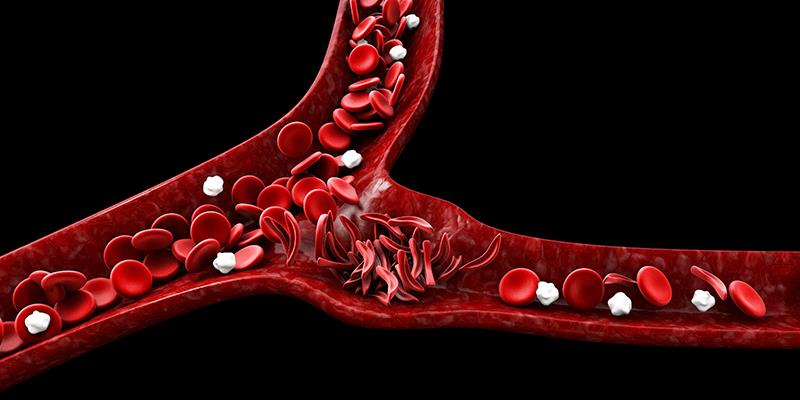Hydroxyurea for HbSC tied to fewer vaso-occlusive events, hospitalizations





Treatment with hydroxyurea at 20 mg/kg/day results in significantly fewer painful vaso-occlusive events and fewer hospitalization in patients with haemoglobin (Hb) sickle cell (HbSC) disease, indicating its effective disease-modifying effect. It is also well-tolerated in both children and adults with HbSC.
“Hydroxyurea treatment led to measurable benefits in multiple haematological parameters and only mild reversible cytopenias,” said lead author Yvonne Dei-Adomakoh from the Department of Haematology, University of Ghana Medical School in Accra, Ghana.
Dei-Adomakoh and her team conducted the PIVOT* trial and enrolled 243 patients with HbSC between the ages of 5 and 50 years. Of these, 123 were children and 120 adults. Eligible participants underwent several laboratory tests and clinical assessments prior to randomization to 12 months of treatment with either hydroxyurea or placebo.
The research team monitored the participants monthly with two possible 2.5-mg/kg/day dose escalations based on blood counts. This was followed by bimonthly monitoring until month 12 with repeat assessments.
The frequency of dose-limiting toxicities (DLT) served as the primary endpoint, while laboratory changes; incidence rate ratio (IRR) of sickle-related adverse events, hospitalizations, transfusions, and malaria; organ assessments of proteinuria, spleen volume by abdominal ultrasound, retinal exam, cerebral oximetry, and quality of life were secondary.
Exploratory endpoints were also assessed, including specialized testing for whole blood viscosity, erythrocyte deformability, and point-of-sickling.
Benefits
The final analysis involved 212 patients with HbSC, of whom 107 received hydroxyurea and 105 placebo at an average initial dose of 20.0 mg/kg/day. Baseline laboratory parameters were as follows: Hb 11.0 g/dL, mean corpuscular volume (MCV) 74 fL, foetal Hb (HbF) 2.3 percent, absolute neutrophil count (ANC) 3.7 x 109/L, and absolute reticulocyte count (ARC) 101 x 109/L. [ASH 2024, abstract 3]
More patients in the hydroxyurea arm had DLT than those in the placebo arm (32.7 percent vs 10.5 percent; p<0.001). Nearly all cytopenias were transient grade 2 neutropenia or thrombocytopenia. Elevated Hb occurred in 12 patients (20 events) treated with hydroxyurea relative to 10 participants (11 events) on placebo.
Laboratory benefits with hydroxyurea versus placebo included increased MCV (17 fL) and HbF (7.6 percent), as well as modest reductions in ANC (‒1.1 x 109/L) and ARC (‒30 x 109/L). However, there was no significant change seen in Hb (‒0.1 g/dL).
In terms of clinical benefits, patients on hydroxyurea had significantly fewer vaso-occlusive painful events (IRR, 0.38, 95 percent confidence interval [CI], 0.28‒0.52; p<0.0001) and fewer hospital admissions (IRR, 0.42, 95 percent CI, 0.22‒0.83; p=0.012). They also experienced fewer incidence of malaria, but this did not reach statistical significance (IRR, 0.77, 95 percent CI, 0.47‒1.26; p=0.30).
The decrease in vaso-occlusive event rates occurred both in children and adults with HbSC. Additionally, a protocol-specified composite endpoint of any acute sickle-related complication occurred in 37 and 69 patients on hydroxyurea and placebo, respectively (χ2=20.4; p<0.0001).
“Standard clinical vaso-occlusive events can serve as the primary study endpoint for a future multicentre definitive phase III trial,” Dei-Adomakoh said.
*Prospective Identification of Variables As Outcomes for Treatment